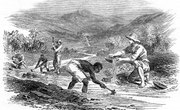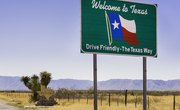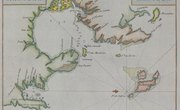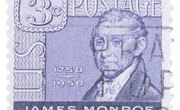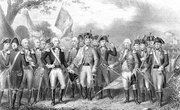The United States and Mexico engaged in a territorial war from 1846 to 1848. Both nations would witness a radical change in size because of this pivotal war. Under the terms of the Treaty of Guadalupe Hidalgo, which ended the war, Mexico ceded 500,000, square miles to the Americans for 15 million dollars. The addition of this massive amount of land increased American concerns, especially in the North, about the continued spread of slavery, a central cause of the Civil War. The Mexican-American war played an important role in history. The war had many causes; most prominent were the concept of Manifest Destiny, the expansion of slavery, the disputed Texas border and the occupation of the border by American troops.
Manifest Destiny
There was a widespread belief in the 19th century that America had a God-given right to spread its territorial boundaries from the Atlantic to the Pacific. This Manifest Destiny theory had a major complication in that Mexico held much of the land west of the United States. American proponents of Manifest Destiny saw California and Texas as especially coveted prizes. Many proponents of war believed it a way to gain this land from Mexico.
Slavery
According to conventional wisdom of the day, the institution of slavery needed to expand into the West to continue thriving. Access to new, fertile land would benefit agricultural production. In contrast, Mexico deplored slavery and wanted to halt its spread into the region. The presence of slavery in Texas concerned the Mexican government. Pro-slavery forces were major advocates of war with Mexico.
Border Dispute
The immediate cause of the fighting between the United States and Mexico was a dispute over the border with Texas. Mexico had established its northern boundary at the Nueces River, approximately 100 miles from the Rio Grande River, which Texas considered the border. Texas claimed independence from Mexico in 1836, a fact Mexico refused to recognize. In 1845, the United States annexed Texas, making it American territory. At this point, the border dispute between Mexico and Texas became an American political issue.
American Blood
President James K. Polk sent troops to cover the border in the disputed territory. Polk did so after first attempting to purchase California and New Mexico from the Mexicans. Mexico refused the offer on January 12, 1846, and President Polk then ordered General Zachary Taylor to occupy the region in dispute. Finally, on April 25, 1846, Mexican troops entered the area and attacked an American patrol. President Polk proclaimed, “American blood had been shed on American soil.” Congress declared war against Mexico on May 13, with 214 in favor and only 16 against.
Related Articles
References
- National Archives: Treaty of Guadalupe Hidalgo
- Manifest Destiny and the Expansion of America; Rodney P. Carlisle and J. Geoffrey Golson
- The Encyclopedia of the Mexican-American War; Spencer C. Tucker, Ph.D.
- The Encyclopedia of the Mexican-American War; Spencer C. Tucker, Ph.D.
- The Ethnic Dimension in American History; James S. Olson and Heather Olson
- Atlas of American Military History; Stuart Murray
- National Archives: Teaching With Documents, Lincoln's Spot Resolutions
Resources
Writer Bio
David Kenneth has a Ph.D. in history. His work has been published in "The Journal of Southern History," "The Georgia Historical Quarterly," "The Southern Historian," "The Journal of Mississippi History" and "The Oxford University Companion to American Law." Kenneth has been working as a writer since 1999.



